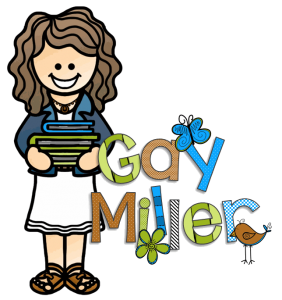
Teaching Fill-in-the-Blanks Test-Taking Tips can improve student performance on quizzes.
Giving Completion or Fill-in-the-Blanks tests is a great way to test knowledge level questions, including recalling details. This test question is especially helpful for testing the content of who, what, where, and when. Another advantage is that the completion of test questions minimizes guessing. Students who know they will be tested with completion questions are encouraged to spend more time studying because they have to come up with answers from memory instead of merely recognizing a correct answer that is presented.
Note, completion questions differ from short answer questions requiring students to write a few sentences to answer a question. Short answer questions usually ask students to explain a principle, solve a problem, or apply knowledge. Contradictorily, a completion question is more about regurgitating facts.
This is Part 4 in a five-part series.
Check out
Come back next week to learn for the final part in the series, Part 5 Essay Test Taking Strategies.
To make the material student-friendly as well as more interesting, I have created a free Boom deck with alternating facts and questions. This game-like activity will keep students engaged as they learn more about test-taking. You will find a link to the Boom deck at the bottom of this post.
Get the FREE Boom Learning Deck here.
The Boom Card Lesson Script
Fill-in-the-Blanks Test-Taking Tips
While fill-in-the-blank tests are not common on standardized tests, many teachers use this question type on exams. Often, teachers create fill-in-the-blanks or completion test questions directly from their lecture notes. Taking great notes is the key to doing well on this type of test. Study for this type of test by highlighting new terms, important dates, noteworthy phrases, and the names of key people in your lecture notes. These will often be what you must write in on a completion test.
One great way to study is to make a photocopy of your notes, whiteout the highlighted words, and then try to go back and write in the missing words. If you have a study partner, exchange photocopied notes with missing words, dates, and definitions. Using someone else’s notes will be an even better practice.
Question
When studying for a fill-in-the-blank test, photocopy your lecture notes and ______________________ keywords. Go back and try to write in the _________________ that were removed. Exchanging notes with a buddy who followed this same process with his/her lecture notes is an especially good way to study for a _____________________ test.
Answer Key
When studying for a fill-in-the-blank test, photocopy your lecture notes and _________white-out_____________ keywords. Go back and try to write in the ____words______ that were removed. Exchanging notes with a buddy who followed this same process with his/her lecture notes is an especially good way to study for a ____fill-in-the-blanks____ test.
Taking the Test
Read each sentence carefully. Look for these clues:
- Multiple blanks can signify that more than one word is needed.
- The length of the blank can help you determine whether it is a short or long answer; however, don’t assume that just because a blank is long or short, a long or short answer is required.
- If the blank is preceded by the article an, the answer starts with a vowel (a, e, i, o, u).
Other Considerations
- Answers need to make the sentence grammatically correct.
- If you can’t remember the exact term, write a descriptive answer to show you understand the question. You may be given partial credit for this.
- Avoid trying to give ‘cutesy’ answers. For example, if asked…
Abraham was born in the state of _______.
Don’t write in nudity or bliss. While this might receive a chuckle from your teacher, it won’t help your grade.
Question
Word Bank
| true/false | multiple choice | matching |
| fill-in-the-blanks | short answer | essay |
Use the word bank to help you complete the following sentences. Some answers will be used more than once.
- When taking a(n)________________________ test, eliminate unlikely answers first.
- With a(n)________________________ quiz, carefully read both lists of answer choices.
- When taking a(n)________________________ test, write a descriptive answer when you can’t think of the term.
- While taking a(n)________________________ , test look at extreme modifiers such as all, none, never and always.
- A(n) ________________________ test requires writing several paragraphs.
- A(n) ________________________ test requires you to write a few sentences explaining a principle, solving a problem, or applying knowledge.
- With a(n) ________________________ question, notice the number of blanks and length of space.
- In a(n) ________________________ quiz, focus on negative words or words with prefixes.
Answer Key
-
- When taking a(n)______multiple choice______ test, eliminate unlikely answers first.
- With a(n)___________matching____________ quiz, carefully read both lists of answer choices.
- When taking a(n) ___fill-in-the blanks__ test, write a descriptive answer when you can’t think of the term.
- While taking a(n) ___________true/false___________, the test looks at extreme modifiers such as all, none, never, and always.
- A(n) ____________essay__________________ test requires writing several paragraphs.
- A(n) __________short answer_________________ test requires you to write a few sentences to explain a principal, solve a problem, or apply knowledge.
- With a(n) ___________fill-in-the blanks______ question, notice the number of blanks and length of space.
- In a(n) ___________true/false___________ quiz, focus on negative words or words with prefixes.






